In Part 2, I will cover Gillingham, Cranborne, Wimborne, Poole , Branksome, Parkstone, Portland and Weymouth.
GILLINGHAM
——————

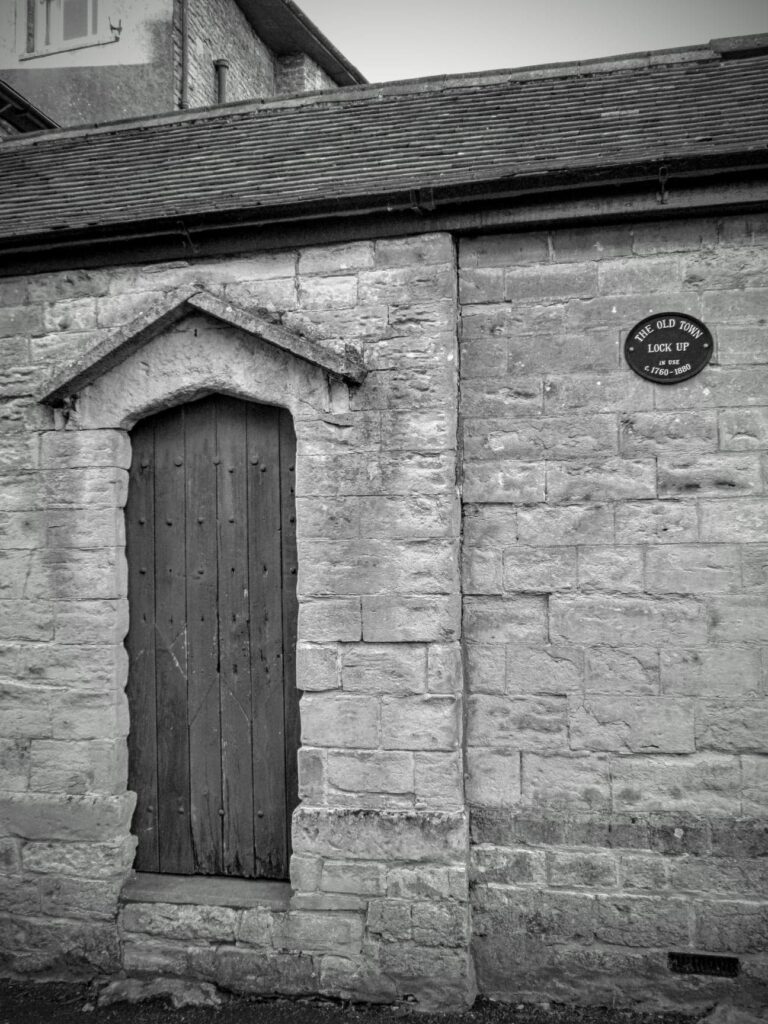
A very welcoming door from Gillingham, which says it all ! Thanks to Carole Dorran for letting me use the photographs.
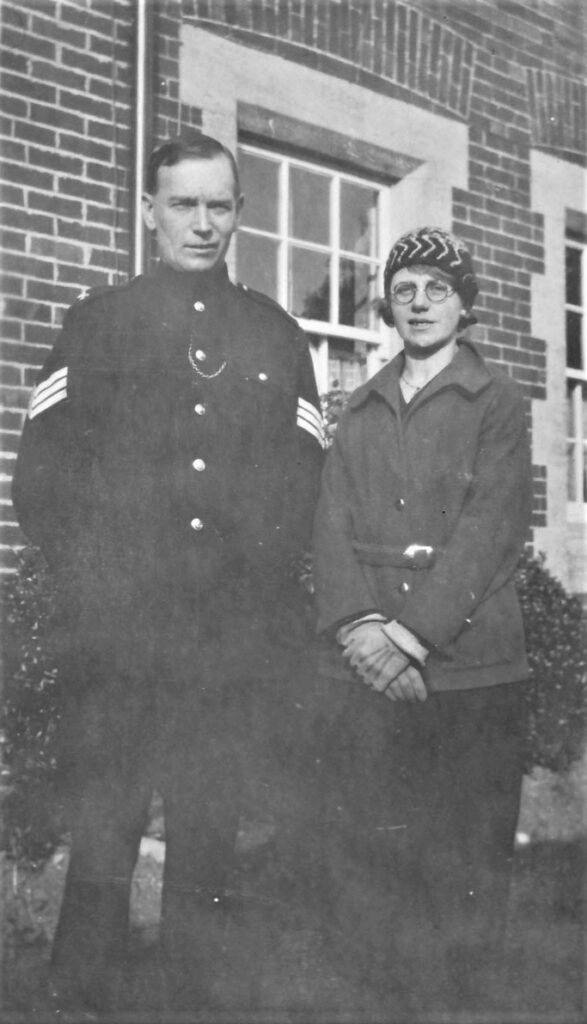
Photograph of Sgt 8 Alfred CASE and his wife May, outside the station.
Photos taken between 1932 and 1936 and below the frontage of the Sgt’s attached house. Photos with thanks to Hazel BRICKNELL.
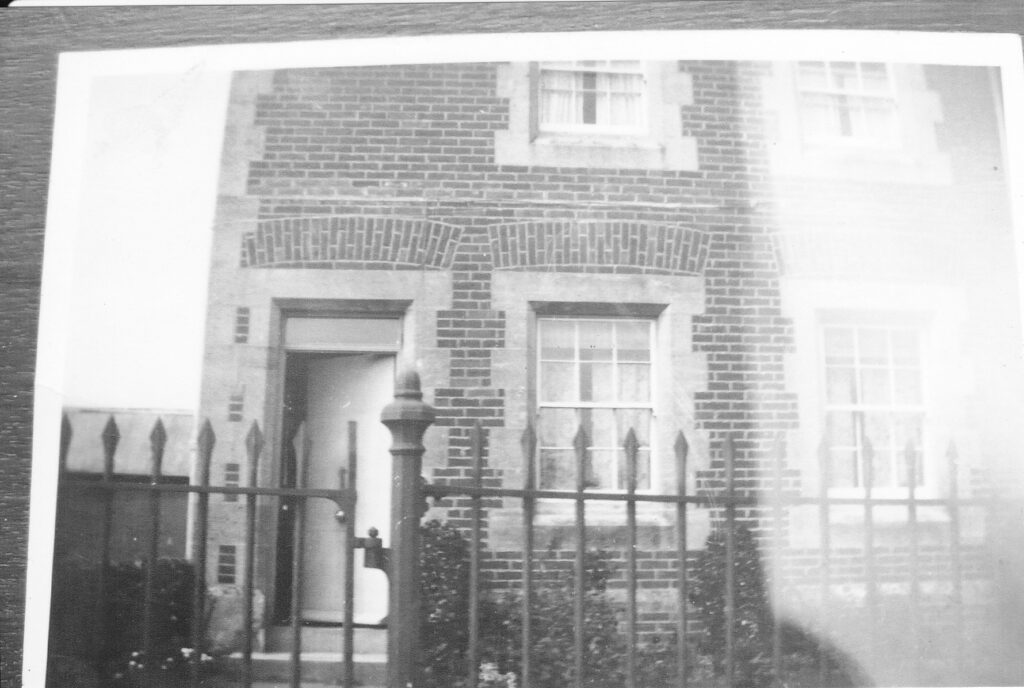
At the DSJC meeting in April 1890 the Clerk read out the report by the County Surveyor. “ I have examined the site proposed by Colonel MATTHEWS near the Board School. The situation seems a good one if it can be obtained at a reasonable sum, and provided water can easily be obtained. I have prepared a set of plans showing the accommodation required, the cost of which I estimate is £900 without the justice room. The plans have been prepared in accordance with the instructions issued by the Home Office, and contain quarters for Sergeant, two single constables and three cells”
In Jan 1891 the clerks of the peace purchased land for police quarters for 150 pounds plus 30 pounds which was an enfranchisement fee. It was then decided that the budget of £2,500 would be allocated to build a station and quarters.
Below is a postcard, of the station and local officers, dated in 1904.


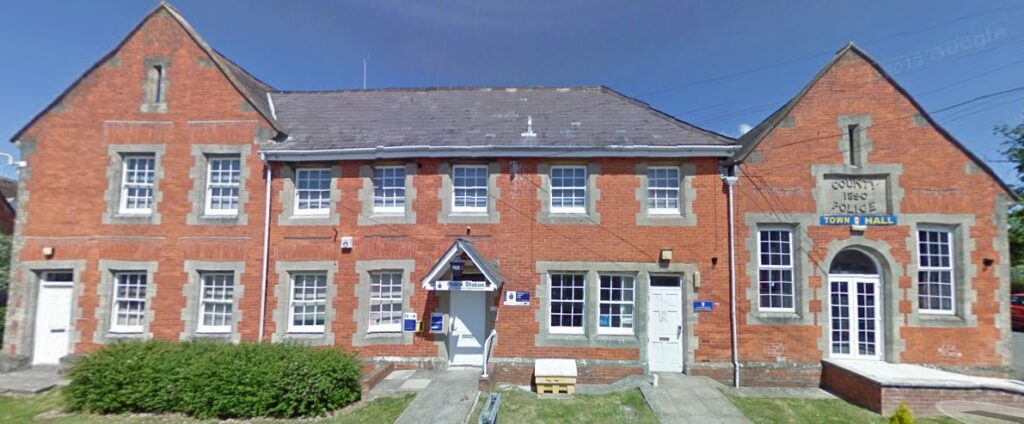
CRANBORNE
—————–
In the 19th century, Cranborne was regarded as a small township of importance because vast estates were owned by Lord Shaftesbury at Cranborne house and chase which also adjoined the estate of the Earl of Shaftesbury at Wimborne St Giles. Both families were intimately connected with the Royal Family. Lord Shaftesbury was a prominent politician and with estate then in Rhodesia and the Earl of Shaftesbury was the Lord Lieutenant of Dorset for many years. Consequently there were many royal visits for shooting and hunting parties, together with banquets and hunt balls and police supervision was demanded. It was desirable that a sergeant and a constable should be stationed there and a freehold cottage with a garden was made available for the sergeant at a cost of 140 pounds and it was proposed to erect a lock up of three cells. It was estimated at first that the costs would be 300 pounds but this was reduced to 270 pounds.
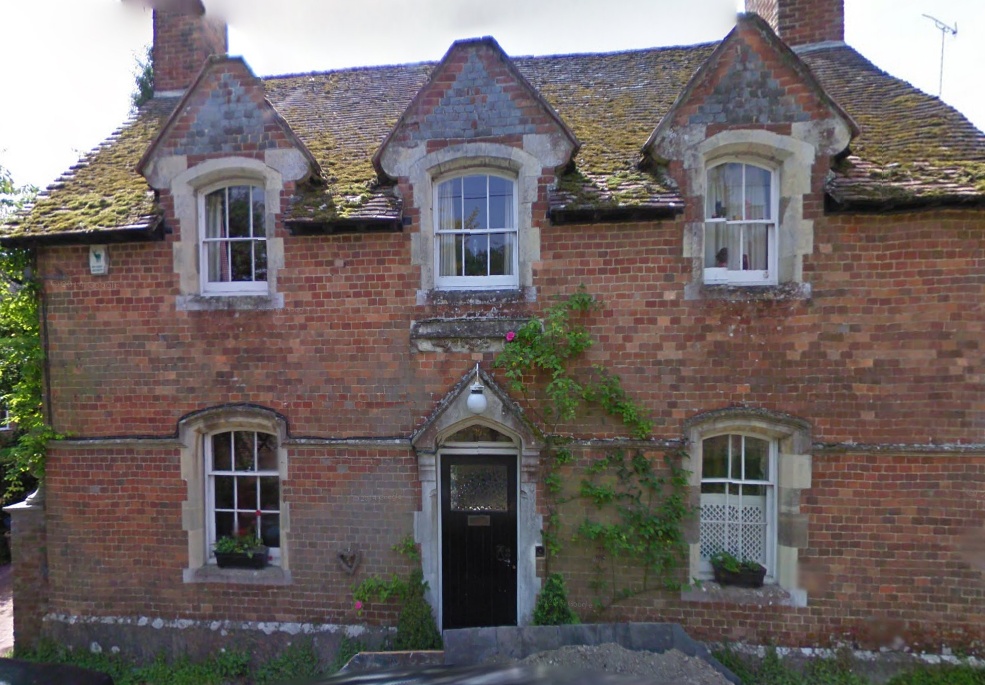
There was considerable wrangling as to the tithe of the land, however counsel assured the committee that it could be accepted with “reasonable safety”.
The difficulty in regard to purchases of land and property, seem to arise in most sites throughout the county and it seems quite obvious that the County Authority were trying to extract land from owners unreasonably in several instances with a veiled threat over their heads. It is not readily revealed whether the sites in question relate to the freehold property of the cottage and garden mentioned, mentioned above but the site was purchased and approved for new buildings by the Secretary of State in October 1859, and in the same month an advert was put in the newspapers for builders to tender for the erection of a police station, with strong rooms at Cranborne.
The plans were available to be seen by applying at the office of Mr Evans, the County Surveyor, at Wimborne from the 15th to 22nd of the month. Sealed tenders must be sent to the Office of the Clerk of the Peace, at Sherborne on or before the 30th. The persons whose tender is accepted will be required to enter into a contract, and give due security for the faithful performance of the same. The lowest tender will not necessarily be accepted.
William Ffooks, Clerk of the Peace.
The police station was built very quickly and occupied in 1860 but was not fully completed with furnishings until 1861. The total cost of the buildings, fittings and fixtures was 581 pounds 6 shillings and 5 pence. The court room attached to the station was not added until a later date.
The station appears to have been a Sgt’s posting up until May 1941 when it was changed to a senior beat constable’s station and was disposed of about 1950 for a private residence and the court room was used as a workshop.
At Longham there was a lock up for police use in a dilapidated state and at the moment I have no idea where it was located. The last beat constable there was Albert Arnold who lived in one of three terraced cottages near the public house and village store.
A new constable’s house as built in the lane opposite Longham congregational church, towards Purley Cross on the south side. A small office was built as an integral part of the building and this was also disposed of before 1976.

Another photograph from the late 1920’s of Sgt 8 Alfred CASE outside the Cranborne station with his two girls Dulcie and Hazel. Photo with thanks to Hazel BRICKNELL.
WIMBORNE
—————-
Wimborne was another district which had its own small police force for a short period between 1855 and 1856 when it was incorporated into the County Constabulary. The idea initially was to buy a private residence for 300 pounds and convert it into a police station. It is recorded that in Jan 1857 the New Inn at Wimborne and the Fleur de lis Inn at Cranborne were used for petty sessions. There was no lock up at Wimborne, but there was one in a dilapidated state at Longham which could be repaired at a small cost.
A desirable house could be purchased at Wimborne for erecting strong rooms, station, residences for constables which could also be made available for petty sessions which would be the court house. After due consideration, the Police Committee decided that the house they had in mind did not meet with its requirements.
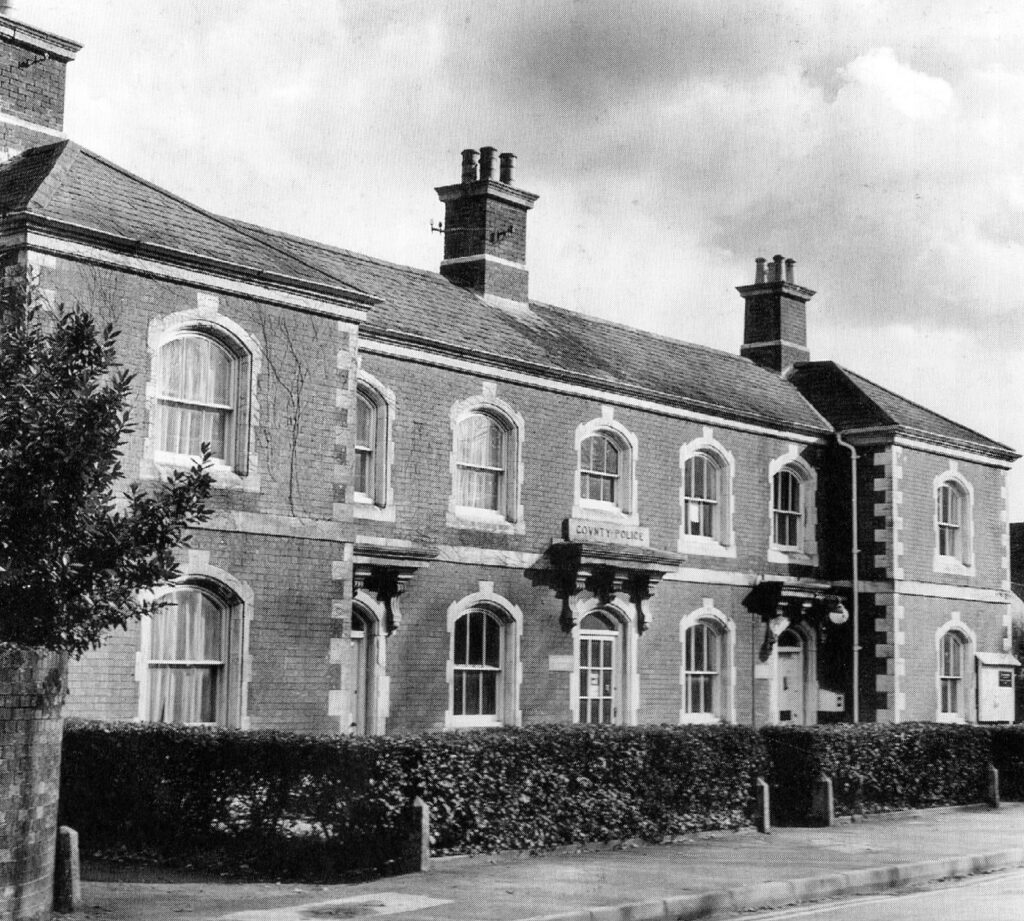
A new site was purchased in Poole Road for 200 pounds although additional land still had to be found to accommodate all the necessary buildings, residences, court and stabling etc. Mr Evans the site owner agreed to an extra 70 feet of land and no further cost were incurred affording a frontage of 100 feet and 70 feet depth and Mr Evans was thanked by the Committee for his generosity.
The contract for Wimborne police station including the cost of the Justice room was agreed at 300 pounds. The police station took less than a year to build and was first occupied in the summer of 1859 by the police and as a Court house, the total expenditure was 1,741 pounds 12 shillings and 11 pence. Over the years several additions were made but in 1976 the police station and buildings did not meet the needs of the modern police force and so it was demolished. ullamcorper mattis, pulvinar dapibus leo.
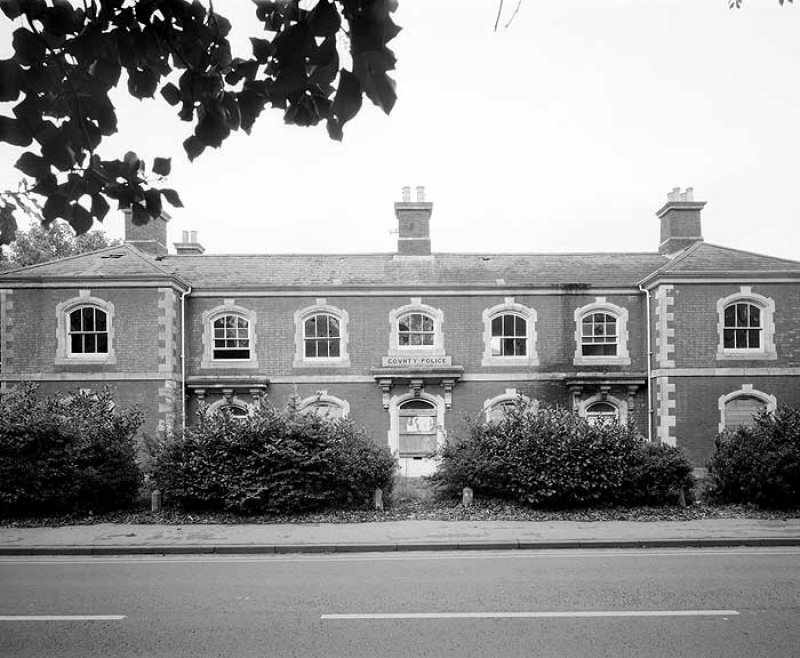
The new police station was then built on Harnham Road adjacent to the fire station and Ambulance station making it a more compact group of public services in a centralised location.
POOLE
———

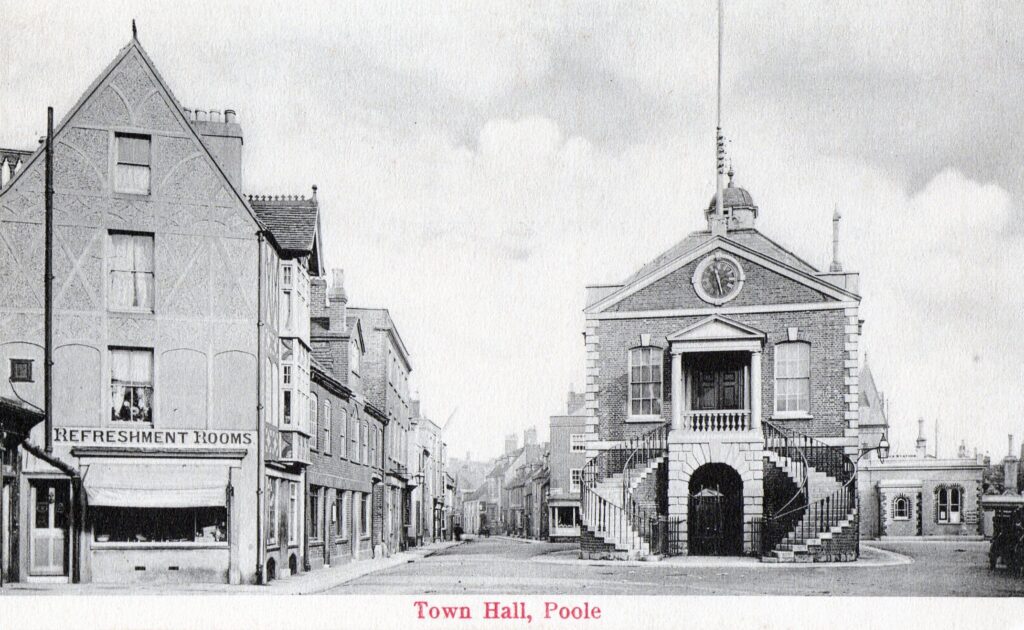
The original location for the Poole police station before 1856 appears to be in the Guildhall in Market Street, until a new police station was completed in 1857. This station existed on the south side and at the rear of the guildhall for about 50 years until it was converted into a public baths. It was then was destroyed by enemy bombs in WW2.
The station can be seen in many old photographs and postcards immediately adjacent to the Old Guildhall which is still there now.
Here is a close up of the old station from the late 19th century, which shows 14 officers in uniform. I cannot be sure of the date but in 1885 it appears there were 14 in the Borough Force so it could have been taken then. Thanks to Royston SCOTT for the photograph.
In 1891 the Poole Borough police force of 16 men was swallowed up by the Dorset County Constabulary.

In the early 1900’s it was decided that the above police station was not fit for purpose and the committee looks at other sites nearby.
In 1902 a new site was surveyed in Serpentine Road (close to the railway station) but it was difficult to agree a price. A few months later a site was then purchased which was made up of 2 roods and 27 perches, this consisted of 5 plots of land and no less than three were joint owned. This necessitated 6 separate conveyances and a portion of the site was also found to be leasehold of one thousand years which complicated the buying process.
This station was to be built of stone and also incorporate justice rooms and have 8 houses to the rear. The land was in Market Street adjoining Love Lane and opposite the old mortuary and graveyard. The graveyard was converted into a public place and the graveyard stones were removed and installed around the perimeter. The police committee had the plans approved in late 1903 and there was a budget of 8000 pounds. This is an overview of the location from a later map.

The below photograph has no date, but similar to many others I have seen. Thanks to Royston SCOTT again for letting me have it.

The contract was won by a Mr NORMAN and the station and houses were completed three months early on 23rd January 1908 which meant some officers could be moved in early. The police station was a double fronted structure with an imposing stone pillared porch way, and was described in the plans as having dark red bricks and terracotta dressings. The station had offices on either side of the entrance, a block of cells, and single men’s quarters for six constables. A senior constable’s house was also attached at the rear and this constable and his wife were responsible for the cooking of meals etc for the single constables and were paid a monthly payment by them for their domestic help.
Another similar photograph below apparently taken in 1918.

Further to the rear and separate were a row of 7 terraced houses of considerable size over three floors and in front of them was an area of ground which was used as a parade yard for drilling the officers. These houses are referred to as “police buildings” in the census.
The photograph below was another left to me by my grandfather, another one with no names, however after some research I believe it was taken in 1924 and shows 3 of the “police buildings” as the background.
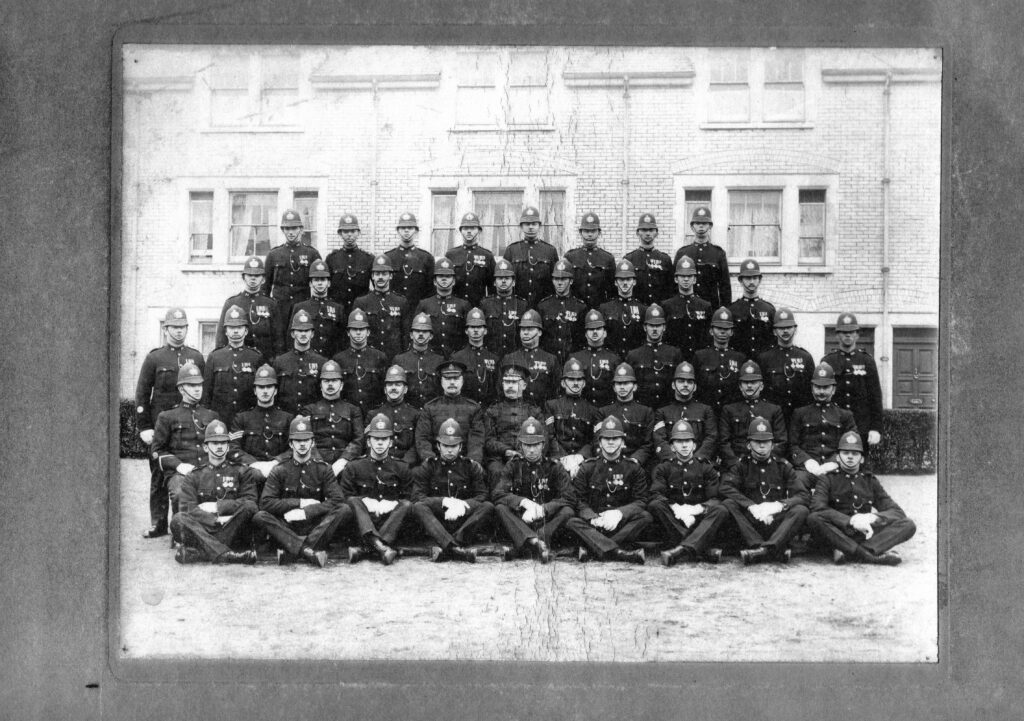
When I was six years old in 1967, I lived with my parents at number 5 Market street (“police buildings”) and I remember that the rooms were very large especially the bathroom on the top, second floor which you could have also put a table tennis table in the middle ! At that point in time I remember the police station as be an unoccupied building which was black in colour and needed a good clean, very sinister looking for a young child.
I am not sure of the exact year but in about the 1980’s all these buildings including the terraced houses of Love Lane were demolished to make way for the present RNLI building which stands right on top of where the police houses were.
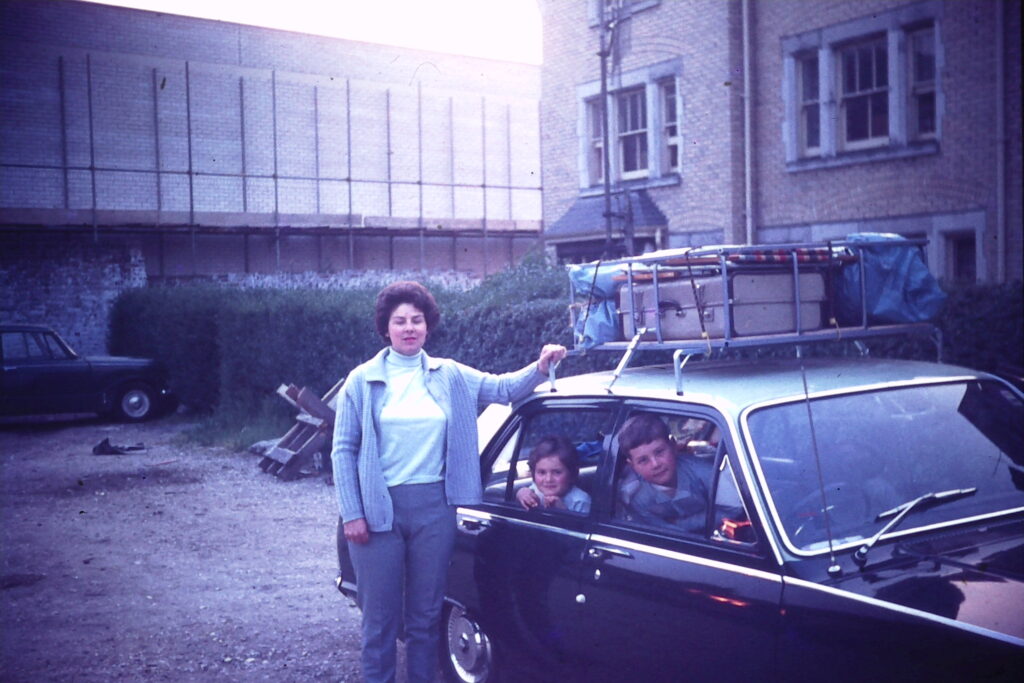
Below another view , this time from the south side by the junction with Love Lane. This must also be in the 1960’s. Thanks to Royston SCOTT again for the photograph.
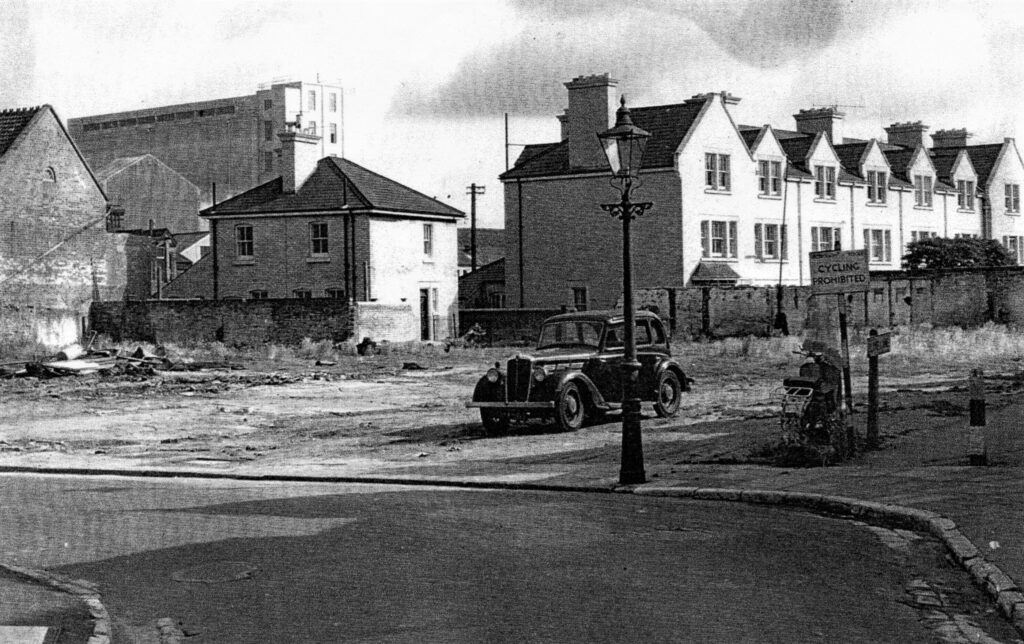
The Superintendent in charge of Poole did not live on site, which was unusual in those days. He lived in Ivy Lodge, Kingland Road, which is the house at the west entrance to Poole Park, which was rented from the council by the police.
At one point the police committee did try and purchase the house next door to the station for the use of the Supt, but the Supt did not want to live next to the station as it would be very noisy!
Apparently now it is called Seldown Lodge and the plaques on the house relate to the opening of Poole Park.

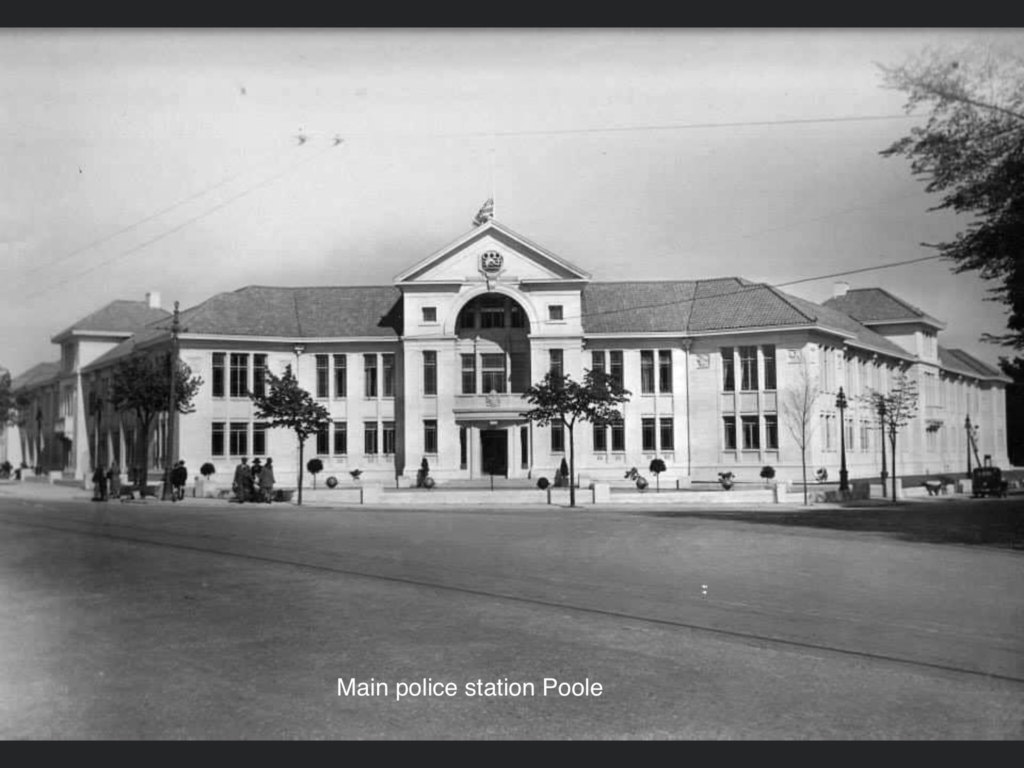
The Market Street police station was later used as a section station when the next station was built in Sandbanks Road, Park Gates East at the rear of the Municipal Civic Centre and adjacent to the east end of Poole Park.
This portion of land was an area of allotments previously. This police station was completed on a budget of 25,000 pounds in 1940, and originally consisted of a block of offices, a Supt’s flat and flats for other staff. Later all the residences were changed into more office accommodation with cell block, canteen and rest room facilities when it was a sub division of the Eastern Division with Bournemouth then being the HQ.
The below two group photographs have been given to me by Sue PRICE and again Royston SCOTT. The first is believed to be from 1942 and the second 1951/2.
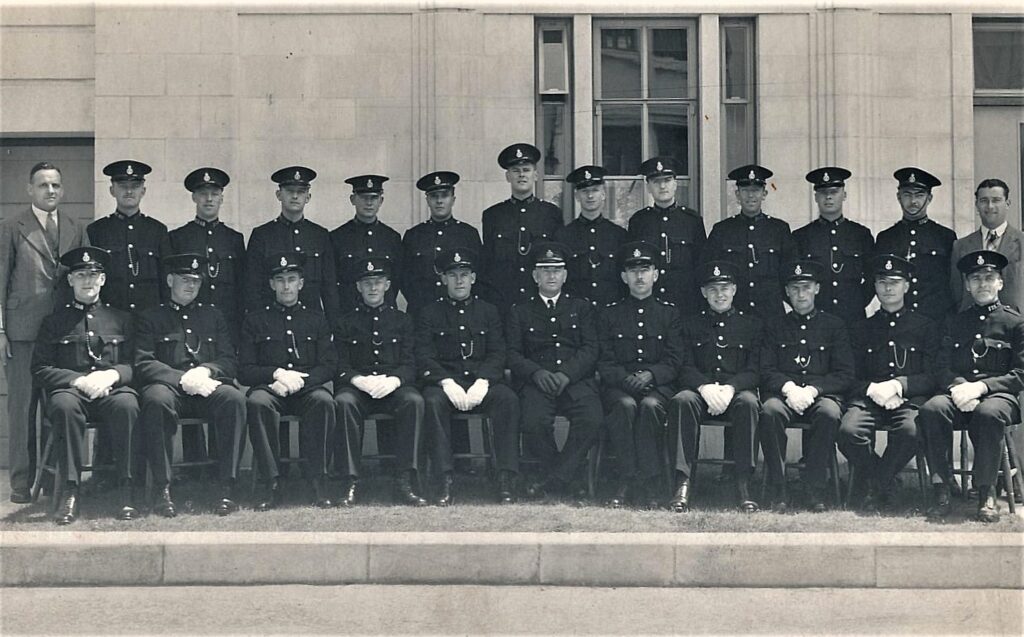
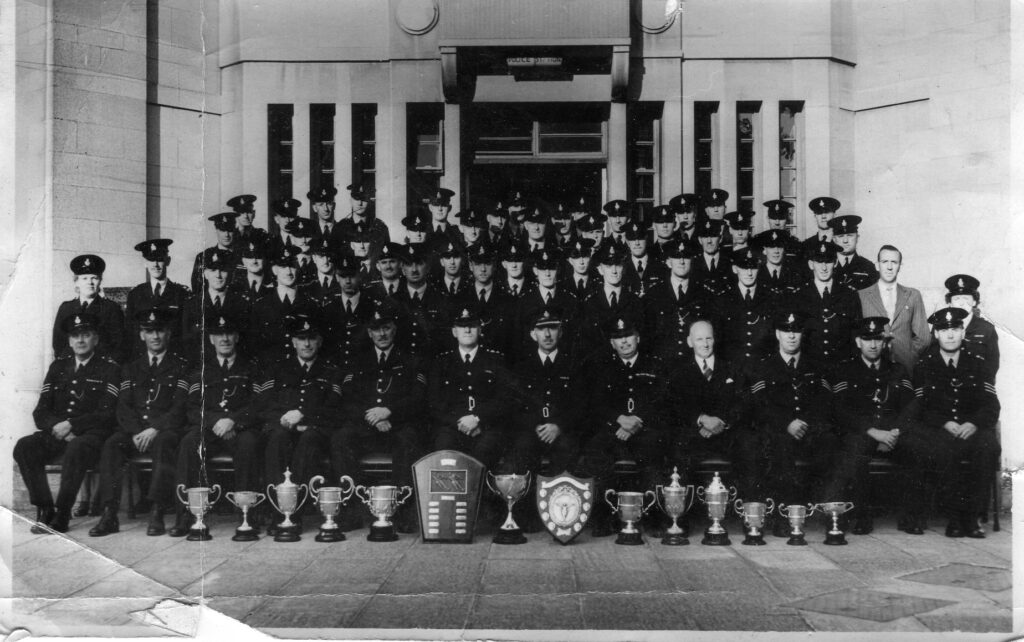
The civic centre police station was a very imposing building and this was what it looked like when sold recently.
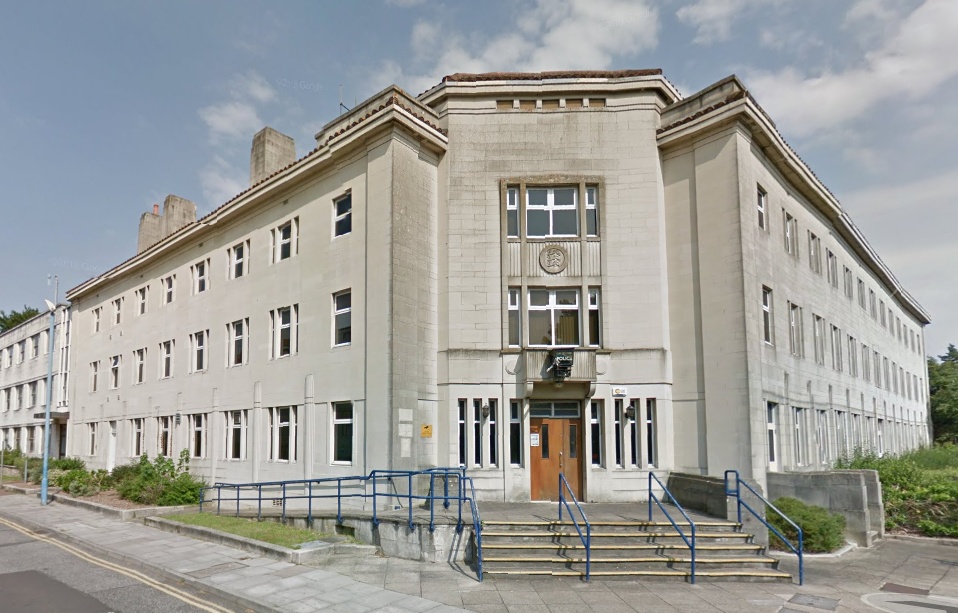
BRANKSOME UPPER PARKSTONE
——————————————-
Until the 1960’s there was a sectional station in Ashley Road at the junction with Uppleby Road with offices, a Sgt’s house and rooms for two or three single men with a small court room attached. It was directly opposite a gas works football ground called Eastlake which was demolished and replaced by a row of shops and private houses. This police station was eventually replaced by another further along the road but on the opposite side and adjacent to Cranbrook Road.

Above is the first Ashley Road police station from probably just after WW1 and below is what it looks like today, a century later.
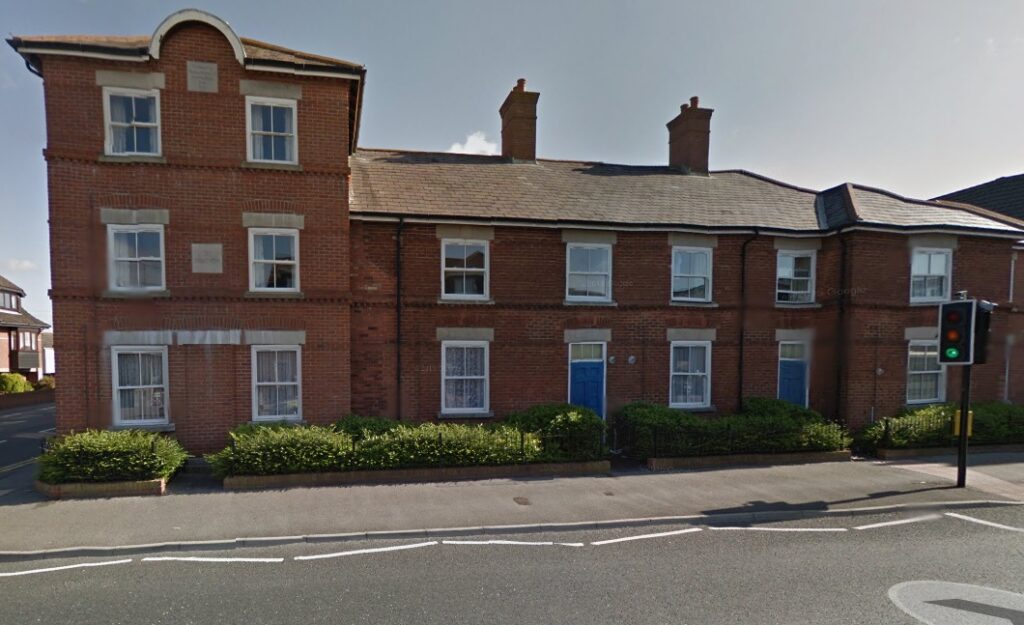
This is the second Ashley Road station , built further west, which I believe is still standing, but if it has not been already, then no doubt be more modern flats and houses. I know that there some houses at the rear, but most officers were living in flats. Extra black and white original photos now added thanks too Alan MATHEWS.
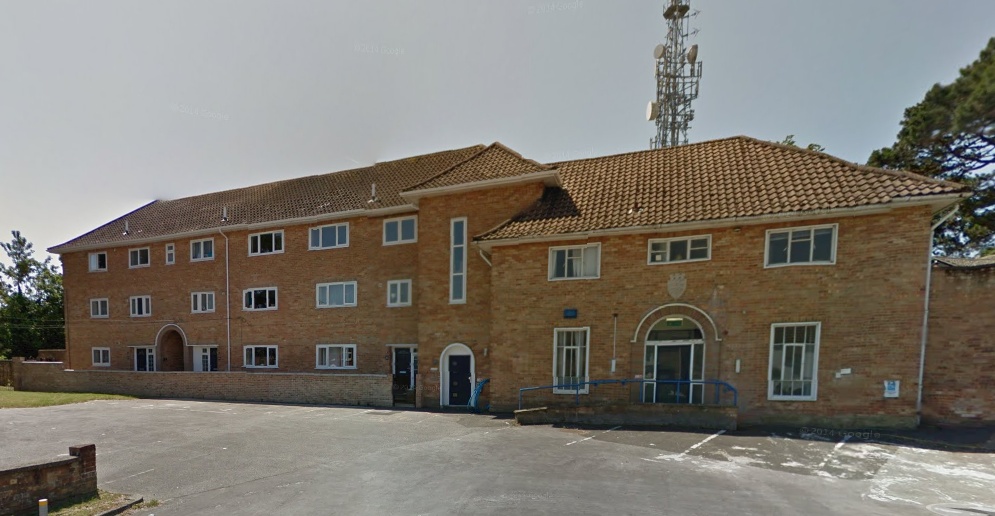

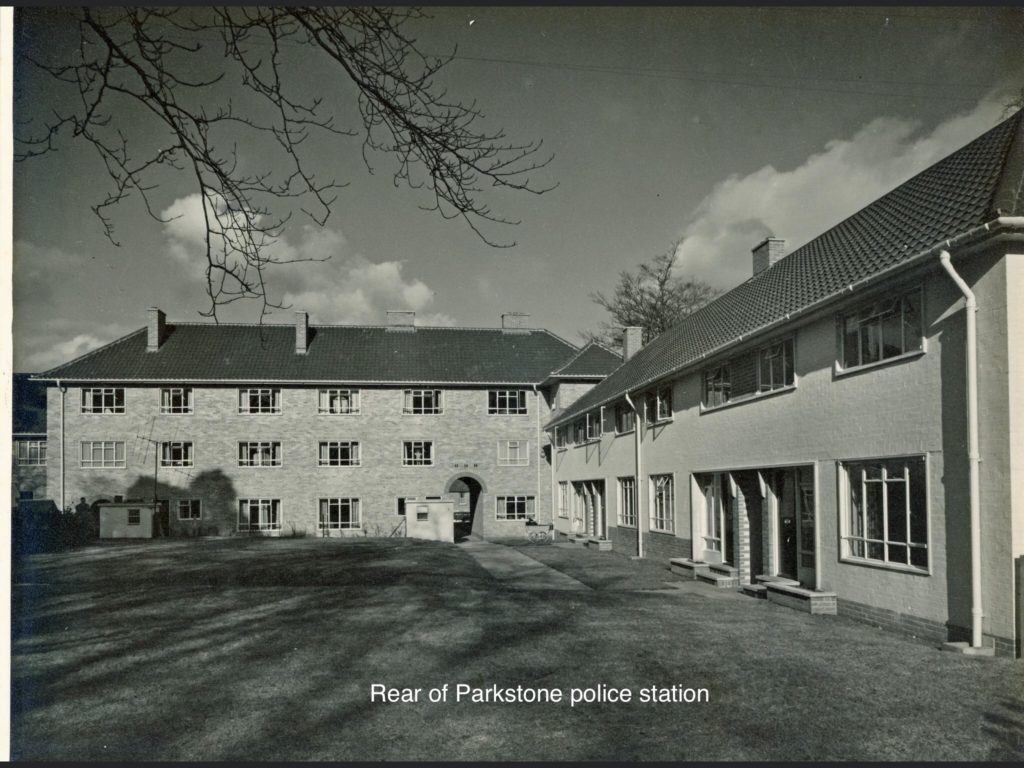
PORTLAND
—————-

The first police station above, on the isle of Portland was not completed until July 1868 and up until that point the officers on the island were living in either rented accommodation or lodging with other families. By 1867 the people of the island realised they were getting a raw deal with only three officers for the 8,000 inhabitants. They wanted more officers and a decent police station with a lock up. A tender was put out and a builder called Gregory from Dorchester built the new station on Castle Road which comprised of two houses with a small station in the middle where there was a charge room and upstairs a singleman’s room. The police station was run by a sergeant who had one house and a senior PC occupied the other, three other constables could be houses in the singleman’s quarters. This building can be seen in the attached photograph and now is two semi detached houses.
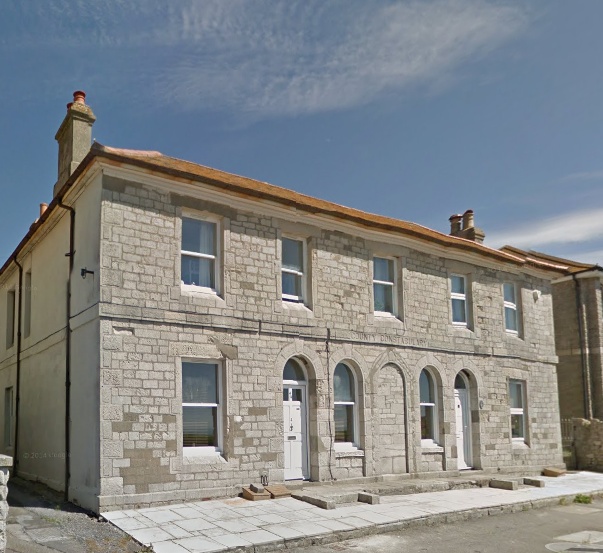
It may not always be appreciated that Portland was a Divisional HQ in the late 19th century and the early part of the 20th century. Portland was developing into a very important naval establishment at the beginning of the 20th century, where all the night dreadnaughts and battleships could anchor in a sheltered breakwater which was completed at the end of the first decade. It was deemed so important that more police supervision was needed for security purposes as it was becoming one of the world’s greatest naval bases protecting the Atlantic Northern Hemisphere. The man power on the island had now expanded so the station was full and there was also a superintendent and another constable living outside of the Underhill district.
In October 1903 it was decided that a new and larger police station was required adjoining the old one at the top of Castle Road and after the land had been acquired from the Admiralty for 775 pounds and tenders were put out for builders quotes. A local building firm called Jesty and Baker won the contract to build the station on a budget of 7,500 pounds. The residents of the island also requested a court as sessions were still being held at the Weymouth Guildhall.
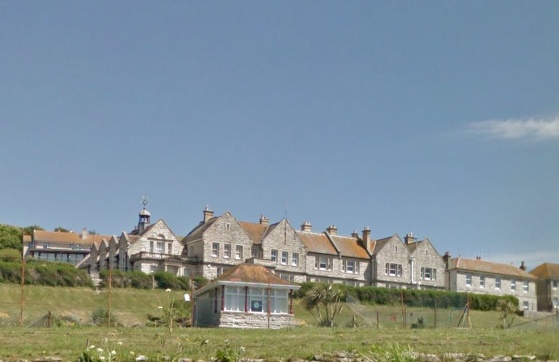
An imposing Portland stone structure was erected by 1906 with office accommodation and residences for a Supt, Sgt and six constables and their families which included single mans quarters, six cells and stables/coach house.
The above photo shows the new and old stations next to each other and still standing.
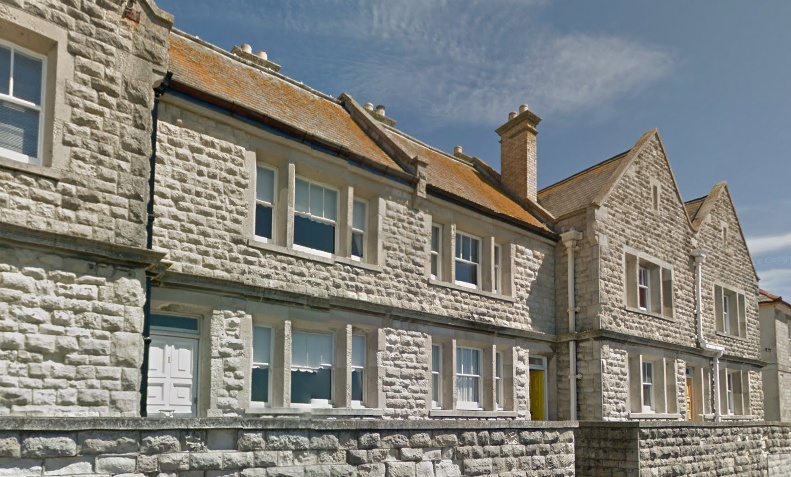
In the 1905 Portland year book an article was written:
These buildings, which are rapidly approaching completion, have been erected by Messrs Jesty & Baker, of Portland, from designs prepared by the County Surveyor, Mr. Walter J. Fletcher, F.R.I.B.A . They adjoin the old Police Station, and occupy a very conspicuous site overlooking the Victoria Gardens and the West Bay, and consist first of commodious residence for the Superintendent. Then come two houses for married constables. The most important block of buildings is that containing the single constables’ quarters and their mess rooms, with special rooms attached for drying and cleaning uniforms, and the usual offices specially arranged in this case for constabulary purposes. In close proximity to the charge room a range of buildings containing six cells are placed, and these have been built on the most up-to-date principles – to paraphrase the hotel proprietor’s announcement, “No pains nor expense have been spared to render these places of temporary residence everything that can be desired” – officially or otherwise. A large exercising yard for prisoners is placed in the rear of the cells, on the floor over the charge and mess rooms two large bedrooms are situated, and these, divided into cubicles, provide sleeping room for six single constables. These buildings, including the cells are warmed by hot water supplied by a special boiler placed in the basement under the site reserved for the future Justice Room.

Obviously they were now very proud of the workmanship of the station, but the most interesting point to me is the mention of a room for drying and cleaning uniforms. Dusty non metalled roads meant that uniform was always hard to keep clean but in Portland it was ten times worse with the movement of Portland stone blocks. An officer only has to walk out the door of the station in summer to be covered in fine stone dust or worse in winter with splashes of lying road sludge. This problem basically brought about the grey summer uniform in 1907 .

The Portland year book went on to say:
In constructing the buildings the first care has been to obtain the best results from good materials and excellent workmanship. To build well and to build with good material is the truest economy especially where public money is concerned, and the inhabitants may be quite sure that their new Police Station will remain for generations as an example of what call be done by following these rules. Naturally enough, seeing that this is a stone district, the whole of the walls are of Portland stone, technically known as rock-faced, level-coursed work – the courses being of different heights to give pleasing variety, and it is ,justly claimed that, these walls, whether facing the public road or in the rear, may be accepted as a true type of that class of work and is an almost perfect specimen of its kind.
The builders, Messrs. Jesty & Baker, are to be congratulated on their achievement considering the difficulties of the site, which necessitated the removal of a huge wedge of earth containing many thousand tons before a beginning could he made with the building. A further difficulty successfully overcome, after much anxious care, was the discovery of an unsuspected spring of water which had to he diverted before the deep foundations could be put in.
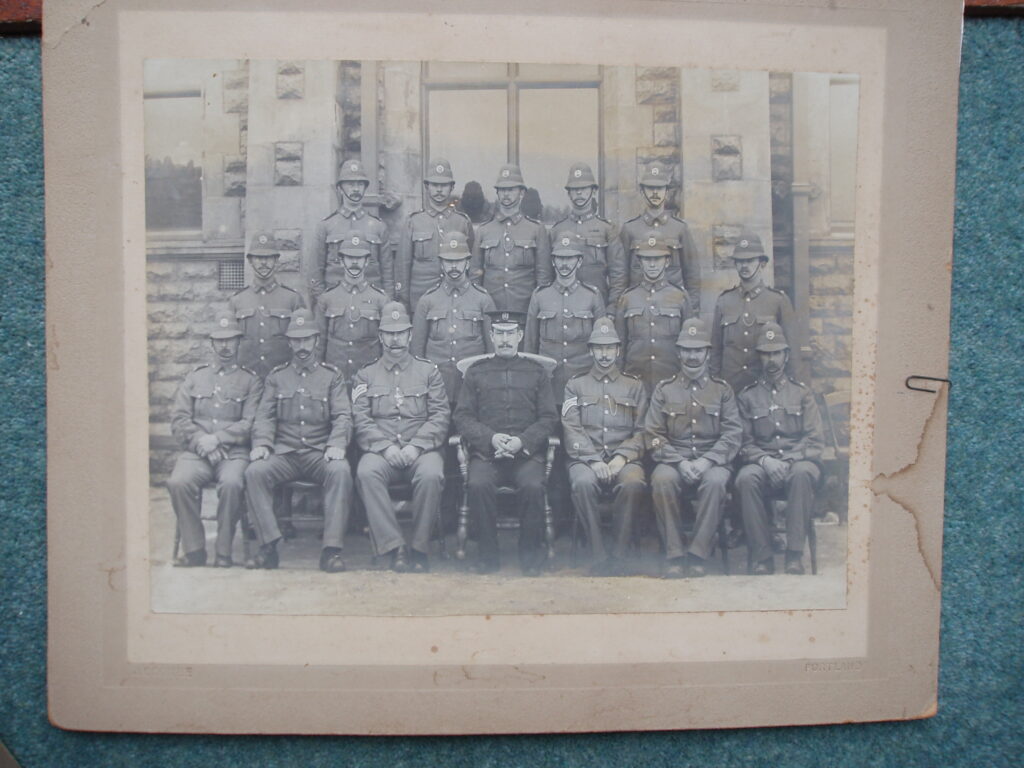
The Grey uniform photograph again , which is taken on the North side of the Court house in either 1907 or 1908.
WEYMOUTH
—————–

The original Weymouth police station was part of the Old Guildhall on St Edmund Street and the police entrance and station was down the side to the rear. So far, I am unsure when the police vacated their part of the building but they were still there in 1928.
On 1st April 1928 the 7 year lease was up for renewal with the Weymouth Corporation. The premises were described as: a ground floor including cells and 2 store rooms on the first floor leading out of the room on the ground floor with exit to St Marys Street of the building known as Guildhall. The main entrance hall and boiler house were used jointly. The current rent was 100 pounds per annum, plus rates which the Corporation wanted to increase in 1929 to 125 pounds. The Police Committee agreed especially as they had spent 70 pounds the previous year redecorating the interior. At that point the accommodation was thought to be large enough but over the years it became very cramped with the increase in man power.
By 1946 as a new station was quite a way off, it was decided to rent one of the large houses on Carlton Road South but I have no idea which building it was, but it will probably be one of the present guest houses. This was much larger and meant the new station was now in no hurry to be built.
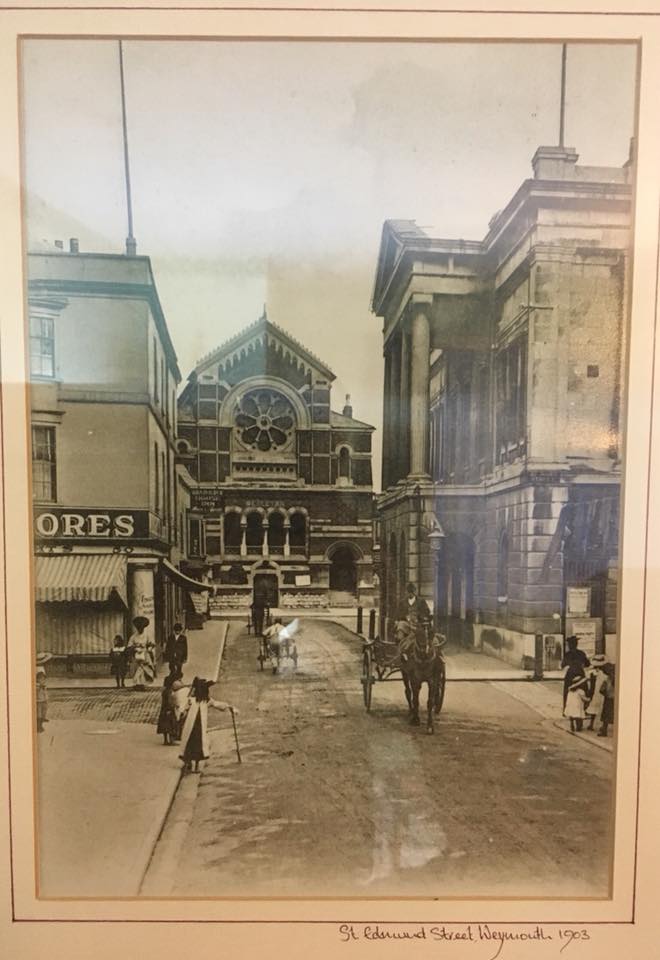
This “guest house” building was not replaced until 1st July 1955 by a new Divisional HQ at Dorchester Road, Radipole.
In the early 1950’s the Admin Supt (my grandfather Vic ) was given the responsibility of planning the new police station. He was still worried about the possibility of attacks living through both world wars and still being in the cold war era. He thought it should be built with below ground level accommodation in case of atomic warfare. He also wanted excellent staff, welfare and rests rooms along with a canteen which was a first for Dorset.
So far, I have not come across anyone who can remember the below ground rooms they only seem to remember the bar!
I can only presume that the plans that were eventually accepted did not include the atomic basement due to the high costs. The station was completed at a cost of 40,000 pounds and opened by the Right Honourable Gwilym LLOYD-GEORGE, MP and son of ex, Prime minister David LLOYD-GEORGE.

The above photo shows the rear entrance of what some people remember as the police club and shows the Chief Ron GREENWOOD to the left off LLOYD George, and to his right, Supt Charles TAYLOR and Insp Charles RUSHEN.
I hope you can help me with some of the photographs I do not, especially Weymouth police station above on Dorchester Road.